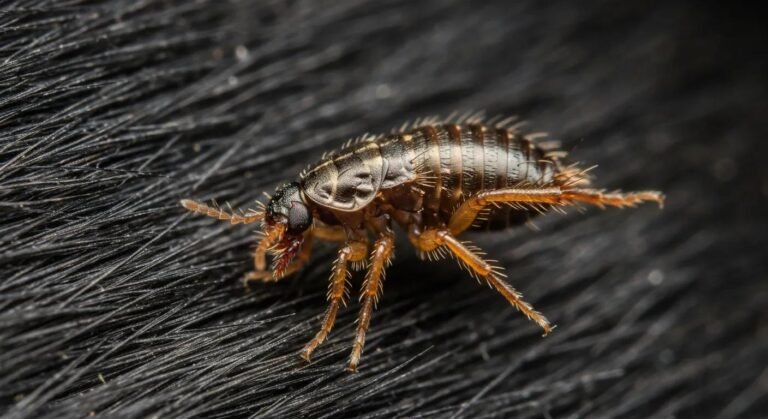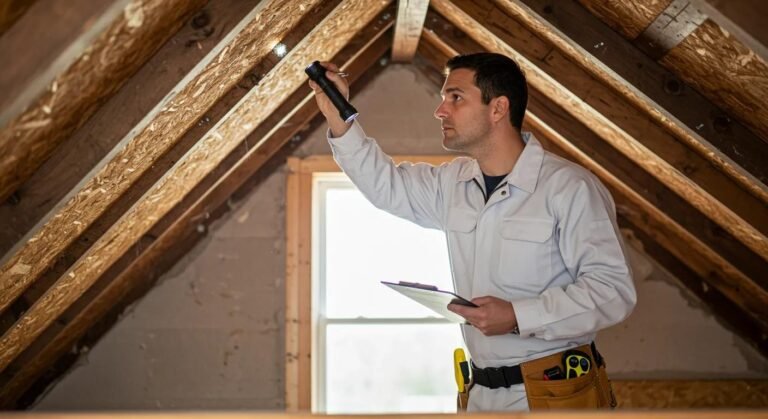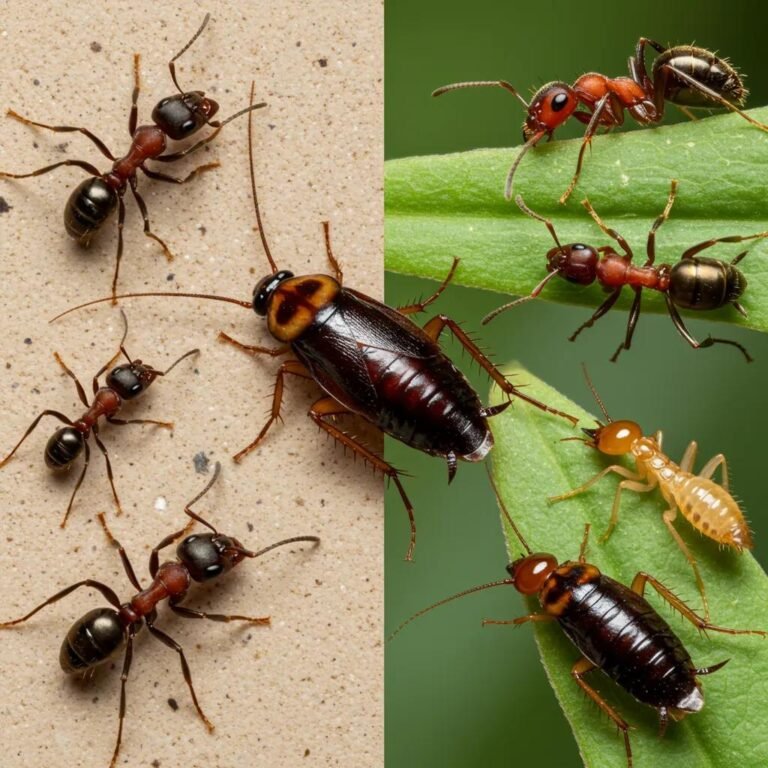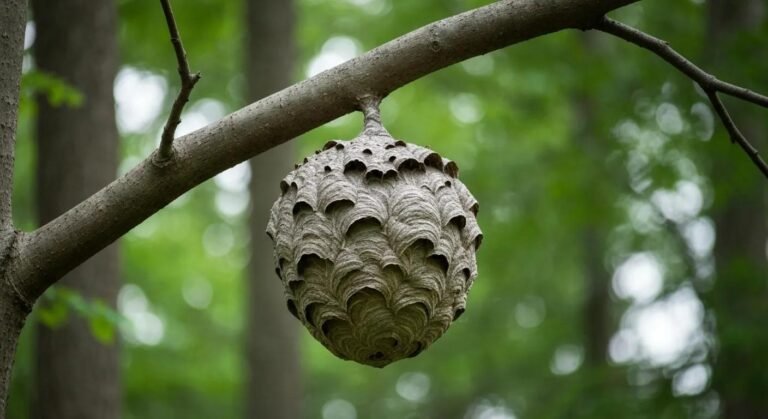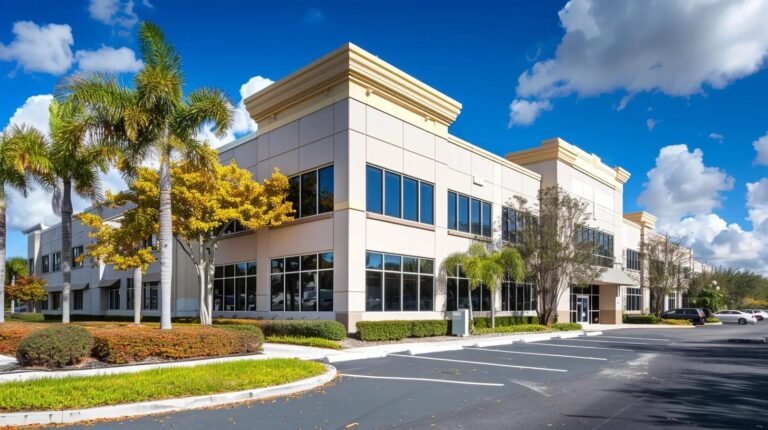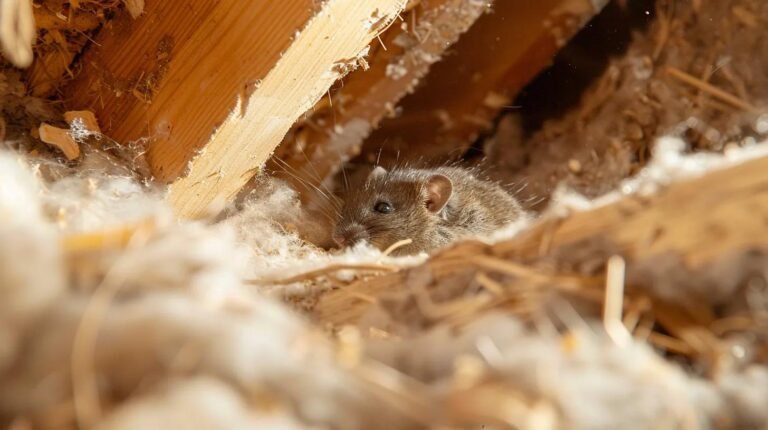South Florida’s Pest Crisis: Fueled by Climate Change
Bugsy’s Pest Solutions Reveals How Rising Temperatures Are Creating New Challenges for Homeowners in West Palm Beach, Broward County & Beyond
South Florida homeowners are facing an unprecedented challenge: climate change is literally breeding bigger, more aggressive pest problems than ever before. At Bugsy’s Pest Solutions, our veteran-owned team has witnessed firsthand how rising temperatures, shifting weather patterns, and extended warm seasons are creating perfect storm conditions for pest explosions across West Palm Beach, Boca Raton, and surrounding communities.
This comprehensive guide examines how climate change is reshaping the pest control landscape in 2025, what it means for your home, and how Bugsy’s science-based approach is evolving to meet these new challenges head-on.
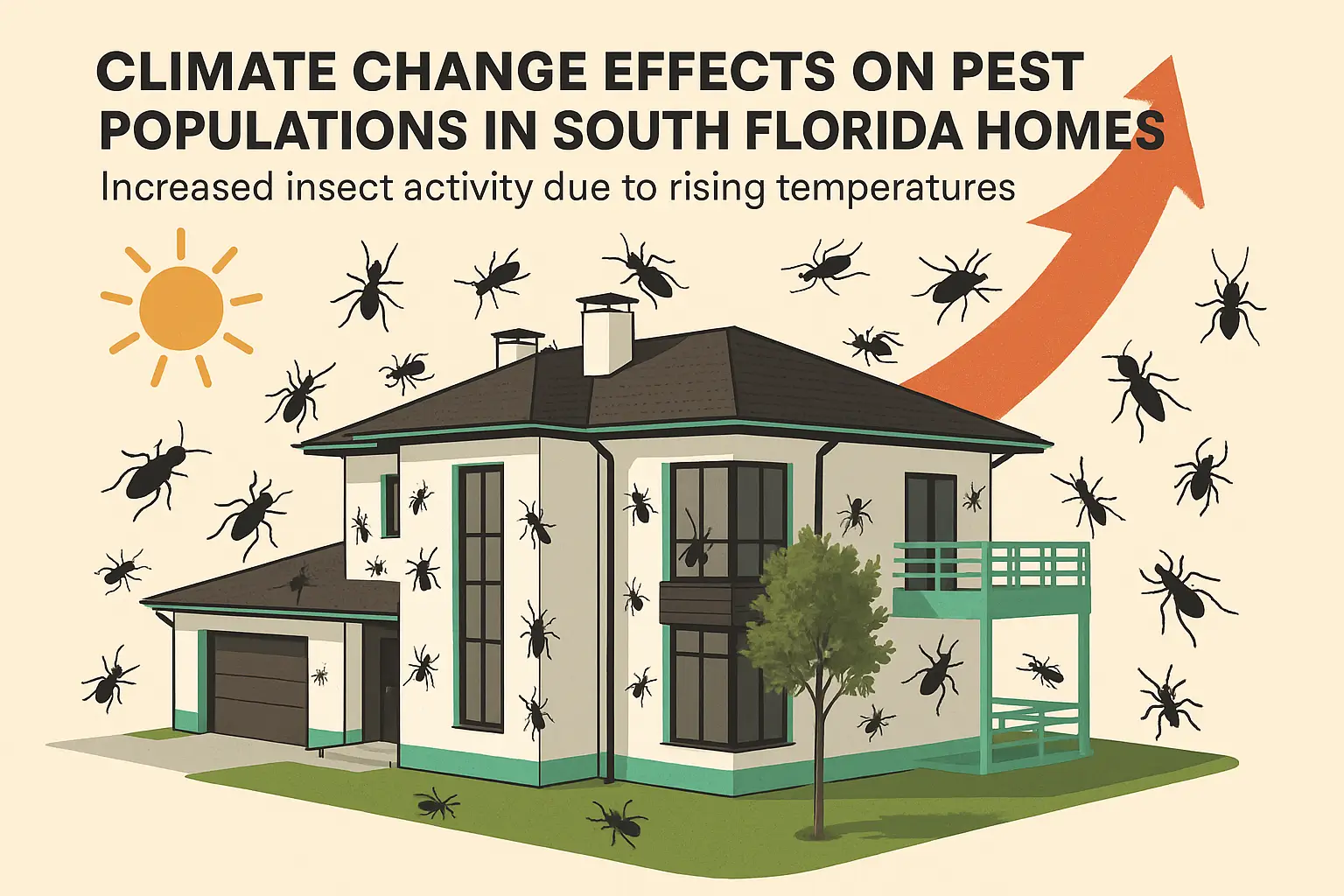
Key Takeaways
- Accelerated Breeding Cycles: Warmer temperatures are causing pests to reproduce faster and more frequently
- Year-Round Activity: Milder winters mean pests never fully die off, requiring continuous protection
- New Invasive Species: Changing climate zones are allowing previously tropical pests to establish permanent populations
- Increased Resistance: Stress from climate changes is making some pest populations more resilient to traditional treatments
- Professional Solutions Required: DIY methods are becoming less effective against these climate-enhanced pest populations
The Science Behind Climate-Enhanced Pest Problems
How Rising Temperatures Accelerate Pest Reproduction
Every degree of temperature increase dramatically affects pest biology. Here’s what Bugsy’s technicians are seeing across South Florida:
Mosquitoes: Traditional mosquito seasons now extend 2-3 months longer than they did a decade ago. Warmer temperatures allow mosquitoes to complete their life cycle in just 7-10 days instead of the historical 14-21 days.
Cockroaches: German cockroaches, already prolific breeders, can now produce up to 8 generations per year instead of the typical 4-5. This means a small cockroach problem can become a major infestation in weeks, not months.
Termites: Subterranean termites are remaining active year-round, eliminating the traditional “dormant” period that previously gave homeowners a reprieve. Colony growth is accelerating by 30-40% compared to historical patterns.
Ants: Fire ants and other species are expanding their ranges northward and establishing multiple queens per colony, creating “super colonies” that are incredibly difficult to eliminate.
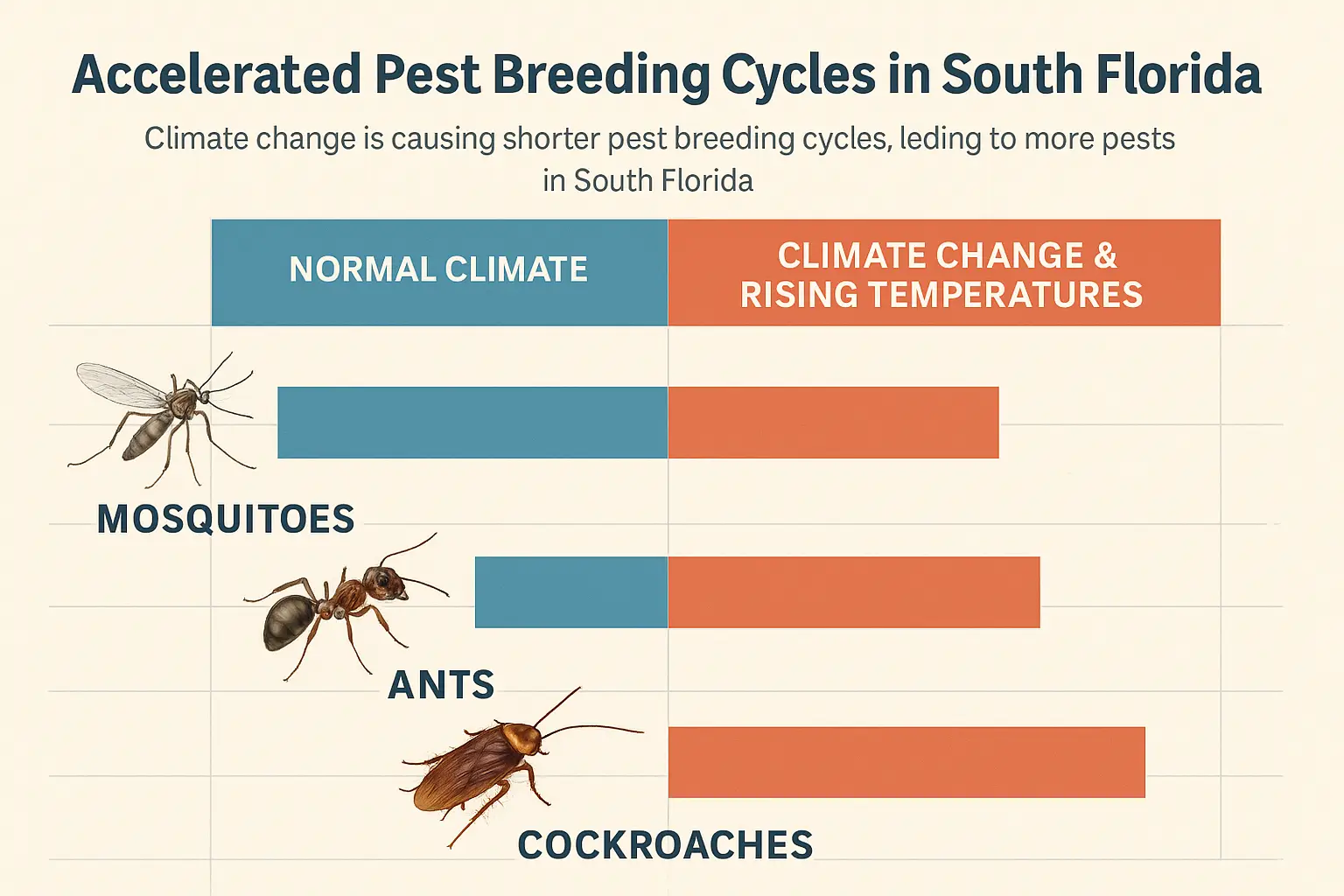
The Humidity Factor: Why South Florida is Ground Zero
South Florida’s naturally high humidity, combined with rising temperatures, creates what entomologists call a “pest acceleration zone.” The combination of heat and moisture:
- Extends pest breeding seasons from 8-9 months to nearly year-round activity
- Increases egg survival rates across all pest species
- Creates ideal conditions for fungal and bacterial growth that many pests feed on
- Maintains optimal conditions for pest development even during traditionally “cooler” months
Climate-Driven Changes in South Florida’s Pest Landscape
New Invasive Species Establishing Permanent Populations
Climate change isn’t just making existing pests worse—it’s inviting new ones to move in permanently. Bugsy’s technicians are now regularly treating infestations from species that were previously only occasional visitors:
Giant African Land Snails: Once limited to the most tropical areas, these destructive mollusks are now establishing populations throughout South Florida, causing extensive damage to landscaping and potentially carrying parasites harmful to humans.
Formosan Termites: These “super termites” are expanding their range throughout Florida, causing billions in damage annually. Unlike native termites, Formosan termites can establish aerial colonies in walls and attics without ground contact.
Asian Tiger Mosquitoes: These aggressive daytime biters are displacing native mosquito populations and are active at times when traditional mosquito control measures are less effective.
Crazy Ants: Also known as Rasberry ants, these electronic-equipment-damaging pests are spreading rapidly through South Florida, attracted to electrical fields and capable of causing significant property damage.
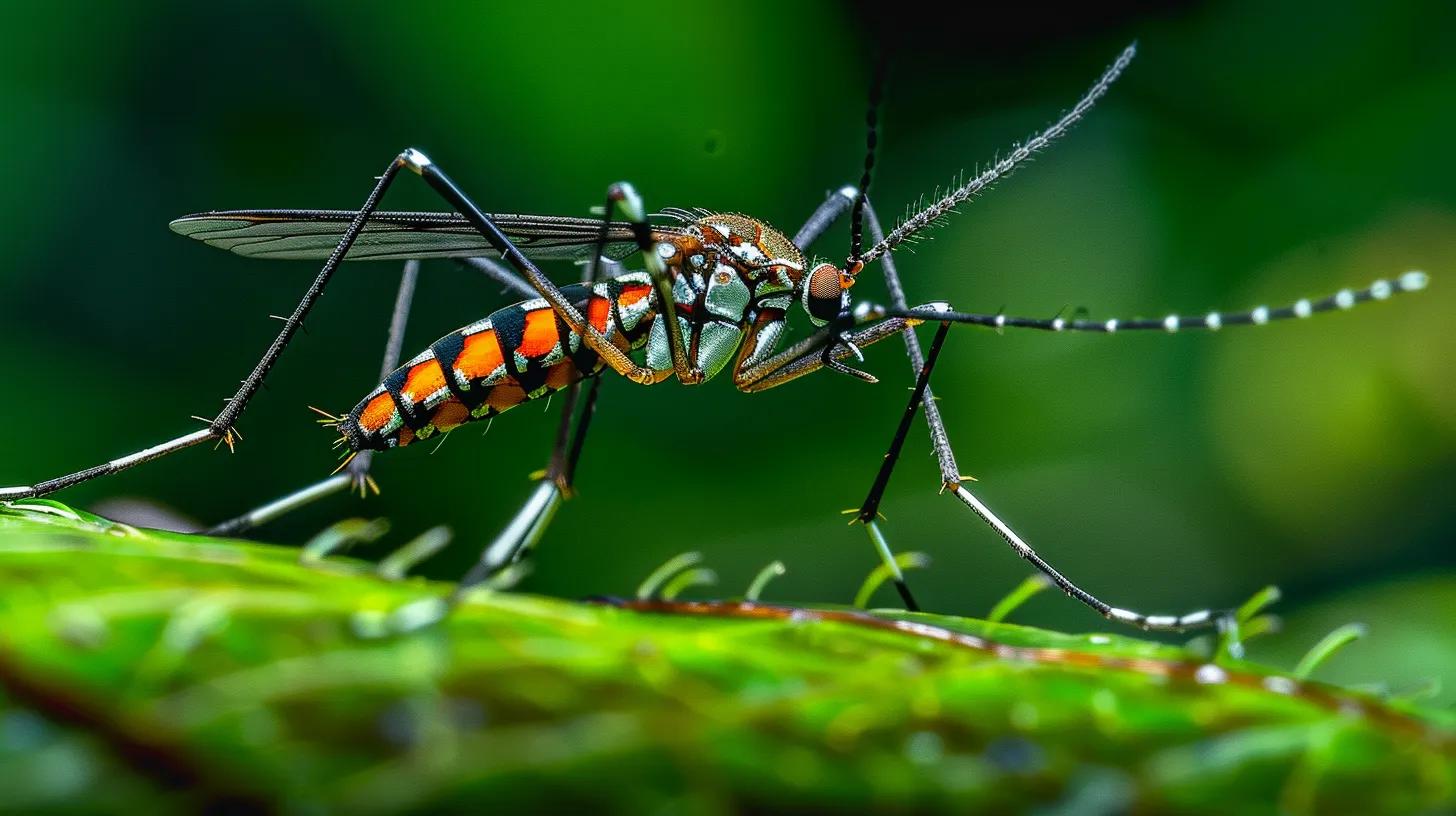
Seasonal Pattern Disruption
Traditional pest control strategies relied on predictable seasonal patterns. Climate change has disrupted these patterns:
- Spring surge starts earlier: Pest activity now begins in February instead of March-April
- Fall activity extends longer: Pest populations remain active through December and January
- Summer peaks are more intense: Higher temperatures create more extreme population explosions
- Winter dormancy is eliminated: Many pests now remain active year-round
How Bugsy’s Approach is Evolving for Climate-Enhanced Pest Control
Advanced Monitoring and Prediction Systems
Bugsy’s has invested in sophisticated monitoring technology that tracks local weather patterns, humidity levels, and temperature trends to predict pest surges before they happen. This proactive approach allows us to:
- Adjust treatment timing: Apply preventive treatments before climate conditions trigger pest activity
- Modify product selection: Use specific formulations that remain effective in extreme heat and humidity
- Increase service frequency: Provide more frequent monitoring during climate-driven peak periods
- Target emerging threats: Focus on new invasive species before they become established
Climate-Adapted Treatment Protocols
Our technicians now use specialized protocols designed for climate-enhanced pest populations:
Heat-Resistant Formulations: Traditional pest control products lose effectiveness in extreme heat. Bugsy’s uses advanced formulations that remain stable and effective even in temperatures exceeding 95°F.
Extended-Release Systems: With year-round pest activity, we’ve developed treatment systems that provide continuous protection for 90-120 days instead of the traditional 30-60 day intervals.
Multi-Modal Approaches: Climate-stressed pests often develop resistance to single treatment methods. Our integrated approach combines chemical, physical, and biological controls for maximum effectiveness.
Micro-Climate Treatment: We analyze the specific micro-climate conditions around your property to customize treatments for areas that may have different temperature and humidity patterns.
Property-Specific Climate Vulnerabilities
Coastal Properties: Double Jeopardy
Homes near the ocean face unique challenges from climate-enhanced pest problems:
- Salt spray damage: Weakens building materials, creating more entry points for pests
- Storm surge effects: Flooding pushes pests toward higher ground and into homes
- Higher humidity levels: Consistently higher moisture creates ideal pest breeding conditions
- Temperature moderation: Milder temperature swings mean less seasonal pest die-off
Bugsy’s coastal protection plans include specialized moisture control strategies and enhanced structural sealing to address these unique vulnerabilities.
Inland Properties: Heat Island Effects
Properties away from the coast often experience “heat island” effects that create even more extreme conditions:
- Higher peak temperatures: Asphalt and concrete surfaces create localized hot spots
- Reduced air circulation: Buildings and landscaping can trap heat and humidity
- Irrigation effects: Landscaping watering creates additional moisture that attracts pests
- Storm water management: Poor drainage creates standing water breeding sites
The Economic Impact: Why Professional Treatment is More Important Than Ever
The True Cost of Climate-Enhanced Infestations
Climate change isn’t just making pest problems worse—it’s making them more expensive. Here’s what Bugsy’s customers are discovering:
Accelerated Property Damage: Termites and carpenter ants are causing structural damage 40-50% faster than historical averages due to year-round activity and accelerated reproduction.
Health Care Costs: Increased mosquito and tick populations are leading to more cases of vector-borne diseases, resulting in higher medical expenses.
HVAC System Damage: Crazy ants and other electrical-equipment-targeting pests are causing thousands of dollars in damage to air conditioning systems and electrical panels.
Landscaping Replacement: Invasive species like Giant African Land Snails are destroying expensive landscaping faster than it can be replaced.
Why DIY Methods Are Failing Against Climate-Enhanced Pests
Traditional DIY pest control methods were designed for historical pest behavior patterns. Climate-enhanced pests are overwhelming these approaches:
- Resistance Development: Frequent reproduction cycles allow pests to develop resistance to over-the-counter products more quickly
- Population Pressure: Larger populations overwhelm DIY treatment capacities
- Behavior Changes: Climate stress is causing pests to change feeding, nesting, and movement patterns
- Product Degradation: Extreme heat breaks down many DIY products before they can be effective
Learn more about why professional pest control outperforms DIY methods in our comprehensive comparison guide.
Bugsy’s Climate-Responsive Service Packages
Platinum Climate Defense Package
Our most comprehensive protection plan, designed specifically for climate-enhanced pest challenges:
- Monthly service visits during peak pest season (March-November)
- Bi-monthly visits during traditional off-season (December-February)
- Emergency response guarantee for climate-driven pest surges
- Advanced monitoring technology including temperature and humidity tracking
- Invasive species specialist treatments for new and emerging pest threats
Gold Adaptive Protection Plan
Balanced coverage that adjusts to seasonal climate patterns:
- Quarterly base service with additional visits during peak periods
- Climate surge response for unusual weather-driven pest activity
- Moisture management consultation to address humidity-related pest attractions
- Seasonal treatment adjustments based on local weather patterns
Eco-Friendly Climate Solutions
For environmentally conscious homeowners, Bugsy’s offers eco-friendly solutions that work effectively against climate-enhanced pests:
- Botanical oil formulations that remain stable in high heat and humidity
- Beneficial insect programs that establish natural predator populations
- Physical exclusion systems that prevent pest entry without chemical treatments
- Integrated landscape management that reduces pest-attracting conditions
Preparing Your Home for Climate-Enhanced Pest Challenges
Structural Modifications for Better Pest Resistance
Climate change requires homeowners to think differently about pest prevention:
Enhanced Sealing: Traditional caulking and weatherstripping degrades faster in extreme heat. Bugsy recommends upgraded materials designed for Florida’s climate.
Improved Ventilation: Better air circulation reduces humidity levels that attract pests, particularly important as temperatures rise.
Moisture Management: Advanced drainage systems and humidity control become critical as increased rainfall and humidity create more pest breeding sites.
Material Upgrades: Some traditional building materials are more vulnerable to climate-enhanced pest damage and may need replacement with pest-resistant alternatives.
Landscaping Strategies for the New Climate Reality
Your yard can either attract or repel climate-enhanced pests:
Plant Selection: Choose native species that require less water and are naturally pest-resistant, rather than non-native plants that may require excessive irrigation.
Drainage Design: Ensure all areas drain properly to prevent standing water that breeds mosquitoes and other pests.
Mulch Management: Use pest-resistant mulch materials and maintain proper depth to avoid creating pest harborage areas.
Tree and Shrub Placement: Strategic landscaping can create natural barriers while avoiding pest highways to your home.
The Costly Impact of Climate Change on South Florida's Pest Problems
West Palm Beach and Coastal Areas
- Higher humidity levels from ocean proximity create ideal conditions for moisture-loving pests
- Storm surge effects periodically flood lower areas, driving pests to higher ground
- Salt air impacts on building materials create more entry points
- Tourism factors increase pest introduction from outside areas
Boca Raton and Central Communities
- Heat island effects from development create localized hot spots that accelerate pest development
- Canal systems provide pest breeding and transportation corridors
- Mixed development patterns create diverse micro-climates requiring customized approaches
- Golf course irrigation maintains high moisture levels that attract pests
Broward County Inland Areas
- Extreme temperature fluctuations stress both pests and control materials
- Everglades proximity provides source populations for invasive species
- Agricultural interfaces create pest pressure from farming activities
- Water management areas can flood periodically, displacing pest populations
The Future of Pest Control in a Changing Climate
Emerging Technologies Bugsy is Adopting
AI-Powered Pest Prediction: Machine learning systems that analyze climate data to predict pest outbreaks before they occur.
Drone Surveillance: Aerial monitoring of large properties to identify pest activity and environmental conditions that promote infestations.
Smart Trap Networks: IoT-enabled monitoring systems that provide real-time data on pest activity and environmental conditions.
Precision Application Systems: GPS-guided treatment application that ensures optimal coverage while minimizing environmental impact.
Research and Development Partnerships
Bugsy’s works with leading universities and research institutions to stay ahead of climate-driven pest challenges:
- University of Florida Entomology Department: Collaborative research on climate impacts on local pest populations
- Florida Agricultural Research Centers: Studies on invasive species management and prevention
- Climate Research Institutions: Analysis of long-term weather pattern changes and pest implications
- Pesticide Manufacturers: Development of next-generation products designed for extreme climate conditions
Taking Action: Your Climate-Aware Pest Control Strategy
Immediate Steps for Homeowners
- Schedule a Climate Vulnerability Assessment: Bugsy’s technicians can identify specific ways climate change may be affecting your property
- Upgrade to Climate-Responsive Service: Traditional pest control schedules may no longer be adequate
- Implement Structural Improvements: Address moisture problems and entry points that become more critical in a changing climate
- Monitor and Document: Keep records of pest activity to help identify climate-related patterns
- Stay Informed: Subscribe to Bugsy’s climate alert system for advance warning of weather-driven pest surges
Long-Term Planning Considerations
- Property modifications may be necessary to address increased pest pressure
- Service plan adjustments should be made based on observed climate trends
- Budget planning should account for increased pest control needs
- Insurance considerations may be relevant for climate-related pest damage
Why Bugsy’s Expertise Matters More Than Ever
Local Climate Knowledge

Our technicians live and work in South Florida—we’re experiencing the same climate changes affecting your property. This local expertise allows us to:
- Recognize climate-driven pest patterns before they become major problems
- Adapt quickly to changing conditions and new pest threats
- Provide realistic expectations about treatment outcomes in the current climate
- Recommend effective modifications based on local experience
Scientific Approach
Bugsy’s combines practical experience with scientific rigor:
- Evidence-based treatments supported by current research
- Continuous education on emerging pest threats and control methods
- Data-driven adjustments to service protocols based on results
- Collaboration with researchers to stay ahead of pest evolution
Commitment to Environmental Responsibility
Even as pest challenges intensify, Bugsy’s remains committed to environmentally responsible practices:
- Minimal chemical impact through precision application and product selection
- Integrated pest management that reduces overall pesticide use
- Native ecosystem protection while controlling harmful invasive species
- Sustainable practices that address immediate needs without compromising long-term environmental health
Conclusion: Staying Ahead of Climate-Enhanced Pest Challenges
Climate change is fundamentally altering the pest control landscape in South Florida. What worked for pest management in the past may no longer be adequate for the challenges we face today. The combination of accelerated pest reproduction, extended activity seasons, new invasive species, and changing behavior patterns requires a more sophisticated, science-based approach.
At Bugsy’s Pest Solutions, we’re not just adapting to these changes—we’re staying ahead of them. Our climate-responsive service packages, advanced monitoring technology, and deep local expertise provide South Florida homeowners with the protection they need in an era of climate-enhanced pest challenges.
Don’t wait for pest problems to overwhelm traditional control methods. The climate has changed, and your pest control strategy should change with it.
Serving West Palm Beach, Broward County & Beyond
Ready to Protect Your Home from Climate-Enhanced Pest Threats?
Climate change is making pest problems worse, but you don’t have to face them alone. Bugsy’s Pest Solutions combines cutting-edge science with proven local expertise to provide effective protection against the new generation of climate-enhanced pest challenges.
Contact Bugsy’s today for your Climate Vulnerability Assessment:
📞 Call:+1-561-654-8998
🌐 Schedule Online:trustbugsy.com/contact
📧 Email:info@trustbugsy.com
Don’t let climate change turn your home into a pest paradise. Call Bugsy’s now and stay ahead of the curve with climate-smart pest control solutions.
Veteran-owned • Licensed & Insured • Satisfaction Guaranteed

